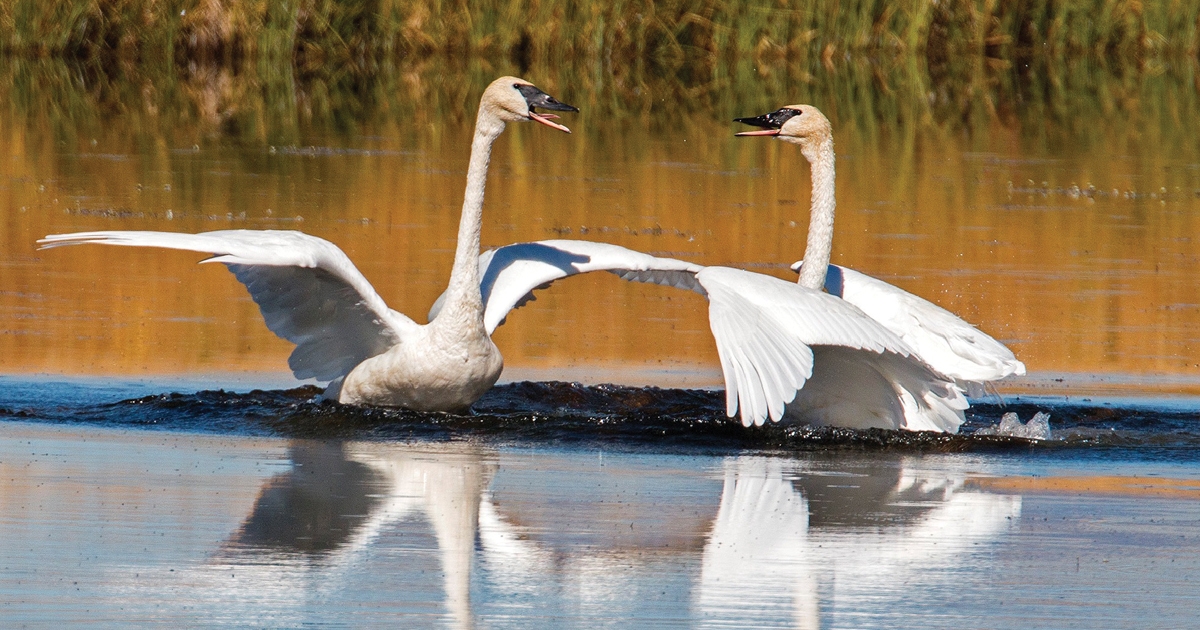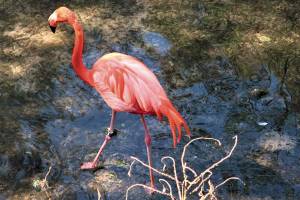In the remote Centennial Valley of Montana lies Red Rock Lakes National Wildlife Refuge, guarded by the rugged Centennial Mountains to the south, just a stone’s throw from Idaho and tucked into parts of the Beaverhead and Gallatin National Forests.
This wild country is the farthest point-source for the Missouri River, 3,678 miles from its final destination in the Gulf of Mexico. It’s this remote country with excellent water habitat that helped keep the trumpeter swan from teetering into oblivion.
But it’s taken more than a refuge to make that happen.
“Landscape-level conservation is an important part of the refuge, and we have a unique relationship with the large, private land owners in the Valley,” explained Bill West, Project Leader of RRLNWR.
Those owners include ranchers, nonprofits like The Nature Conservancy that has conservation easements on several ranches in the Valley, the Montana Land Alliance, and other public land partners like the USFS, BLM, and Montana Fish, Wildlife and Parks.
In 1932 fewer than 70 Trumpeter Swans, the largest swan species in North America, dwelled in the Greater Yellowstone ecosystem, with most of them living in the Red Rock Lakes region.
The refuge was established in 1935 in an effort to save the swans.
The lush, expansive water habitat—the refuge comprises the largest wetland complex in the Greater Yellowstone area—was the reason trumpeter swans were here in the first place. Establishing the refuge to safeguard the birds from market hunting for food and feathers was key to their survival. Now, some swans stay on the refuge year-round, thanks to open water from warm springs, allowing for feeding.
Most of the flock, however, migrates into the Snake River plain near the Henry’s Fork all the way to American Reservoir in Idaho, acccording to West.
Today, approximately 600 swans move between the borders of Idaho, Wyoming, and Montana. Each year resident swans are joined by thousands of swans migrating south from Canada, eager to refurbish old nests and mate.
A total of 232 bird species have been identified on the refuge. The Upper Red Rock Lake is noted for excellent birding due to the variety of habitats that attract numerous species. The best time to see birds is in May and June: white-faced ibis, black-crowned night herons, and peregrine falcons are a few of the species seen here.
Having cattle grazing on the refuge, like bison did at one time, is beneficial to several other bird species.
“We run a four-year rotation plan,” said West. “Long-billed curlew like to use the land the first year we don’t graze. The second year of resting, the land sandhill cranes move in, and the third year, meadow voles show up as a great source of food for raptors. Scientifically, we haven’t found any benefit for keeping cattle off longer than three years.”
Being able to graze on the refuge means ranchers are able to keep their cows out of more fragile riparian areas on their property and have cows graze on more durable land designated by agency plans.
To accommodate wildlife, refuge staff and a cadre of volunteers drop fences in late fall to allow for safer passage of wildlife like antelope, deer, elk, and moose.
Most of these animals move to lower elevations, but not all of them.
“There are a lot of moose that stay in the Valley during the winter and they are prone to get hung up in fences, so we drop as many as we can,” said West.
May and June are the best times to see newborn fawns and calves. Warm weather in June and July stimulates an abundant wildflower display.
The refuge has two primitive campgrounds—one each at Upper and Lower Red Rock Lakes.
The Upper Lake site has a pit toilet and potable spring water as well as bear-safe food storage containers. Not only do black bears roam the area but grizzly bears have recently put in an appearance.
“The grizzlies are coming over Red Rock Pass into the Valley,” said West. “For a lot of them it’s the first time they’ve seen cattle and there about 12,000 cows here in summer.”
To control predation, an effective range rider program has been adopted to keep the conflict between wild and domestic animals to a minimum.
“The program is economically pragmatic,” West said. “More cows come back in the fall from grazing in the mountains than before the range rider program started to deter grizzlies. Wolves aren’t as much of a problem: if you provide a little more human presence they’ve learned to stay away from people.”
The Lower Lake campsite has a pit toilet, but no potable water. The Upper Lake has a more forested setting while the Lower Lake showcases the open sage habitat. A stay at each site will provide an array of possible wildlife viewing options.
Grayling, a native fish, were at one time plentiful in the refuge. Between 1898 and 1903 33 million grayling eggs were gathered in Elk Springs and distributed by railway throughout the West. But overfishing to feed miners in the late 1800’s, the introduction of nonnative trout, and a dam placement in the early 1900’s decimated the fish. Now, a concerted effort by refuge staff and Montana Fish, Wildlife and Parks is working to bring these iconic fish back.
“Until recently, no grayling had spawned in Elk Spring for over one hundred years,” said West. “Getting a healthy population of grayling back is important to a group of volunteers who help us with our plan.”
Motorized travel is limited to refuge roads, and lakes are open during specific months to non-motorized boats. The wild nature of the refuge is protected by the limited maintained trails.
Only two, Sparrow Pond Trail and Odell Creek Trail, are maintained although hiking cross country with suitable skills and provisions is allowed.
Winter comes early here and lasts a long time. By mid-October visitors chance frigid temperatures and snowstorms that can leave the unprepared stranded, so plan on seeing this beautiful refuge—one of the few designated a National Natural Landmark and a Wetland Wilderness in the country—from May through September.
It’s a Montana jewel you don’t want to miss. MSN










